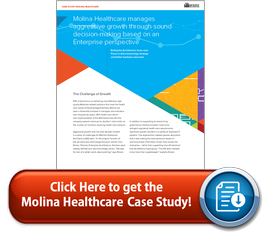BankSpeak
#WorldBank #DataModel I recently went through a data modelling exercise, underlining and classifying the nouns in a set of functional design documents for a large client project. So I was interested to read an article based on an analysis of World Bank reports over the last fifty years, based on a similar technique. Some of the authors’ key findings resonated with me, because I have seen similar trends in the domain of enterprise architecture.
The article looks at the changes in language and style during the history of the World Bank. For the first couple of decades, its reports were factual and concrete, and the nouns were specific – investments created assets and produced measurable outcomes, grounded in space and time. The dominant note is of factual precision – demarcating past accomplishments, current actions, necessary policies and future projects – with a clear sense of cause and effect.
“A clear link is established between empirical knowledge, money flows and industrial constructions: knowledge is associated with physical presence in situ, and with calculations conducted in the Bank’s headquarters; money flows involve the negotiation of loans and investments with individual states; and the construction of ports, energy plants, etc., is the result of the whole process. In this eminently temporal sequence, a strong sense of causality links expertise, loans, investments, and material realizations.”
In recent decades, the Bank’s language has changed, becoming more abstract, more distant from concrete social life. The focus has shifted from physical assets (hydroelectric dams) to financial ones (loans guarantees), and from projects to ‘strategies’. Both objectives (such as ‘poverty reduction’) and solutions (such as ‘education’, ‘structural adjustment’) are disengaged from any specificity: they are the same for everybody, everywhere. The authors refer to this as a ‘bureaucratization’ of the Bank’s discourse.
“This recurrent transmutation of social forces into abstractions turns the World Bank Reports into strangely metaphysical documents, whose protagonists are often not economic agents, but principles—and principles of so universal a nature, it’s impossible to oppose them. Levelling the playing field on global issues: no one will ever object to these words (although, of course, no one will ever be able to say what they really mean, either). They are so general, these ideas, they’re usually in the singular: development, governance, management, cooperation. … There is only one way to do things: one development path; one type of management; one form of cooperation.”
I have seen architectural documents that could be described in similar terms – full of high-level generalizations and supposedly universal principles, which provide little real sense of the underlying business and its requirements. Of course, there is sometimes a need for models that abstract away from the specifics of space and time: for example, a global organization may wish to establish a global set of capabilities and common services, which will support local variations in market conditions and business practices. But architects are not always immune to the lure of abstract bureaucracy.
In Bankspeak, causality and factuality is replaced by an accumulation of what the authors (citing Boltanski and Chiapello) call management discourse. For example, the term ‘poverty’ is linked to terms you might expect: ‘population’, ’employment’, ‘agriculture’ and ‘resources’. However the term ‘poverty reduction’ is linked with a flood of management terms: ‘strategies’, ‘programmes’, ‘policies’, ‘focus’, ‘key’, ‘management’, ‘report’, ‘goals’, ‘approach’, ‘projects’, ‘frameworks’, ‘priorities’, ‘papers’.
We could doubtless find a similar flood of management terms in certain enterprise architecture writings. However, while these management terms do have a proper role in architectural discourse, we must be careful not to let them take precedence over the things that really matter. We need to pay attention to business goals, and not just to the concept of “business goal”.
Franco Moretti and Dominique Pestre, BankSpeak – The Language of World Bank Reports (New Left Review 92, March-April 2015)
Related post: Deconstructing the Grammar of Business (June 2009)


 Every year, right around this time, a buzz zips through the enterprise architecture community when InfoWorld, Forrester Research and the Penn State University Center for Enterprise Architecture open their collective
Every year, right around this time, a buzz zips through the enterprise architecture community when InfoWorld, Forrester Research and the Penn State University Center for Enterprise Architecture open their collective 


